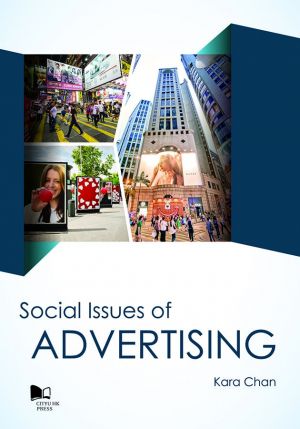The Evolving Landscape of Media and Communication in Hong Kong
HKD238.00
In stock
Over the last twenty years Hong Kong society has witnessed dramatic change, and nowhere is this better reflected than in the realm of media and communications. Across the fields of journalism, public relations and advertising, we can see the changing trends in terms of audience consumption and interaction. From technological developments to the shift in audience participation, the expectations and functions of these professions have been greatly altered.
While many of these changes are occurring worldwide, within Hong Kong the processes of change have been further complicated by recent social and political events. Through a selection of essays by field experts, this volume explores the evolution of media itself as well as the complex causes underlying these developments. It identifies not only the difficulties and opportunities for media professionals today, but also the evolving role of the audience.
While many of these changes are occurring worldwide, within Hong Kong the processes of change have been further complicated by recent social and political events. Through a selection of essays by field experts, this volume explores the evolution of media itself as well as the complex causes underlying these developments. It identifies not only the difficulties and opportunities for media professionals today, but also the evolving role of the audience.
ISBN
978-962-937-351-1
Pub. Date
Jan 12, 2018
Weight
0.5kg
Paperback
308 pages
Dimension
178 x
252 mm
Subjects
The year 2017 marked the twentieth anniversary of Hong Kong’s return to Chinese sovereignty. Round-number anniversaries like this one are good moments for scholars to look back and analyse what has changed and what has stayed the same since the important event. For researchers at Hong Kong Baptist University’s School of Communication, the two-decade mark provides a good opportunity to examine the state of the territory’s media today. “One country, two systems” — the coexistence of China’s communism and Hong Kong’s free-market capitalism — has been the governing principle for Hong Kong, and this pairing of opposites has resulted in fluctuating levels of cooperation and tension. This applies to the media and communication sectors as much as any other areas of life in Hong Kong.
The main task of this edited volume is a difficult one: to capture the current state of Hong Kong’s media and communications development, media education, advertising and public relations (PR) research, and evaluate their application. The problem is not so much in the themes themselves but in the major changes witnessed by Hong Kong society, in general. As the contributors to this volume aptly highlight, what is happening in the media has its roots in the deep and diverse changes that are taking place in society, politics, ideology, economics and technology. The difficulty in discussing the transformations of media and communication professions themselves — such as journalism, PR, advertising and so on — is compounded by the complexity of its causes.
Providing an in-depth analysis for the main communication and media sectors in Hong Kong, this volume identifies the difficulties and opportunities of media professionals to engage with their audiences. At the same time, some of the authors highlight how the audience — through their rituals consumption—have an evolving role in deciding the fate of media and communication industries.
The main task of this edited volume is a difficult one: to capture the current state of Hong Kong’s media and communications development, media education, advertising and public relations (PR) research, and evaluate their application. The problem is not so much in the themes themselves but in the major changes witnessed by Hong Kong society, in general. As the contributors to this volume aptly highlight, what is happening in the media has its roots in the deep and diverse changes that are taking place in society, politics, ideology, economics and technology. The difficulty in discussing the transformations of media and communication professions themselves — such as journalism, PR, advertising and so on — is compounded by the complexity of its causes.
Providing an in-depth analysis for the main communication and media sectors in Hong Kong, this volume identifies the difficulties and opportunities of media professionals to engage with their audiences. At the same time, some of the authors highlight how the audience — through their rituals consumption—have an evolving role in deciding the fate of media and communication industries.


